|
Books Should Be Free Loyal Books Free Public Domain Audiobooks & eBook Downloads |
|
|
Books Should Be Free Loyal Books Free Public Domain Audiobooks & eBook Downloads |
|
Fairy Tales |
|---|
|
Book type:
Sort by:
View by:
|
By: Various | |
|---|---|
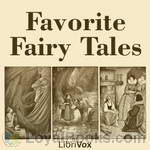 Favorite Fairy Tales
Favorite Fairy Tales
This book of favorite fairy tales was compiled and illustrated by Peter Newell. it includes Jack The Giant Killer; Cinderella; Sleeping Beauty; Little Red Riding Hood; Aladin and the Wonderful Lamp, The Ugly Duckling, Beauty and the Beast, Snow White and Rose Red, The Wild Swans, Ali Baba and the 40 Thieves, and 4 others that are not so famous. The stories included were based upon the those that various famous men remembered as their favorites when children | |
 Cocoa Break Collection
Cocoa Break Collection
Following in the vein of my Coffee-Break collections, this is a collection of short (all under 15 minutes) stories for kids. Focus is on fables and fairy tales published before 1923. | |
By: Hamilton Wright Mabie (1846-1916) | |
|---|---|
 Fairy Tales Every Child Should Know
Fairy Tales Every Child Should Know
This is a collection of well known fairy tales by various authors, including the Brothers Grimm, Charles Perrault and many others. | |
By: J. M. Barrie (1860-1937) | |
|---|---|
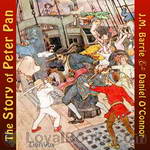 The Story of Peter Pan
The Story of Peter Pan
THE STORY OF PETER PAN RETOLD FROM THE FAIRY PLAY BY SIR J.M. BARRIE BY DANIEL O'CONNOR. Basically, Daniel O'Connor took the story from the original play, with the approval of Barrie, and shortened it into a book with music and beautiful illustrations. This shorter book was published before Barrie wrote the longer novel using the same plot and characters. | |
By: Frank R. Stockton (1834-1902) | |
|---|---|
 The Bee-Man of Orn and Other Fanciful Tales
The Bee-Man of Orn and Other Fanciful Tales
A collection of nine enchanting short stories filled with curious beasts and unexpected endings. Included are The Bee-Man of Orn; The Griffin and the Minor Canon; Old Pipes and the Dryad; The Queen's Museum; Christmas Before Last: Or, The Fruit of the Fragile Palm; Prince Hassak's March; The Battle of the Third Cousins; The Banished King; and The Philopena | |
By: Joseph Jacobs | |
|---|---|
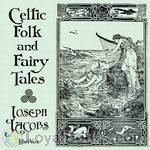 Celtic Folk and Fairy Tales
Celtic Folk and Fairy Tales
Celtic Fairy Tales is a collection of 25 folk and fairy stories collected from Ireland and Scotland. At what I imagine is the Frontispiece, or the dedication page, is the phrase: “SAY THIS Three times, with your eyes shut ‘Mothuighim boladh an Éireannaigh bhinn bhreugaigh faoi m’fhóidín dúthaigh.’And you will see/What you will see_” A loose translation of this Gaelic phrase is “I sense the smell of a sweet, enchanting Irishman around my dear homeplace.” | |
By: Howard Pyle (1853-1911) | |
|---|---|
 Twilight Land
Twilight Land
The room was all full of twilight; but there they sat, every one of them. I did not count them, but there were ever so many: Aladdin, and Ali Baba, and Fortunatis, and Jack-the-Giant-Killer, and Doctor Faustus, and Bidpai, and Cinderella, and Patient Grizzle, and the Soldier who cheated the Devil, and St. George, and Hans in Luck, who traded and traded his lump of gold until he had only an empty churn to show for it; and there was Sindbad the Sailor, and the Tailor who killed seven flies at a blow,... | |
By: William Shakespeare (1564-1616) | |
|---|---|
 Venus and Adonis
Venus and Adonis
Venus and Adonis is Shakespeare's narrative poem about the love of the goddess Venus for the mortal youth Adonis, dedicated partly to his patron, the Earl of Southampton (thought by some to be the beautiful youth to which many of the Sonnets are addressed). The poem recounts Venus' attempts to woo Adonis, their passionate coupling, and Adonis' rejection of the goddess, to which she responds with jealousy, with tragic results. This recording features three different readers performing the narration, Venus, and Adonis. | |
By: Caroline Snowden Guild | |
|---|---|
 Violet: A Fairy Story
Violet: A Fairy Story
A charming fairytale -- with realistic touches -- from the mid-19th Century. | |
By: John Cargill Brough (1834-1872) | |
|---|---|
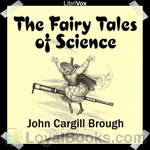 The Fairy Tales of Science
The Fairy Tales of Science
This book, written in the mid 19th century and illustrated by Charles H. Bennett, provides an entertaining introduction to topics in science for children. In each chapter, the author uses a popular myth or fairy tale to lay the groundwork for an equally fascinating "fairy tale of science" full of interesting facts and real life examples. | |
By: Andrew Lang (1844-1912) | |
|---|---|
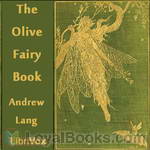 The Olive Fairy Book
The Olive Fairy Book
Andrew Lang’s Olive Fairy Book (1907) was a beautifully produced and illustrated edition of fairy tales that has become a classic. This was one of many other collections of fairy tales, collectively known as Andrew Lang’s Fairy Books. | |
By: Edith Howes (1872-1954) | |
|---|---|
 Maoriland Fairy Tales
Maoriland Fairy Tales
Most of the tales have some basis in history. It is an oral language so all histories have to be remembered and retold. To help with this memory retelling the carvings all have relative information and prompts, stories of Atua (sort of gods) and other people (pakeha) that have been encountered are all blended into the stories.One of the amazing things to listen to is a person's whakapapa (family line). My son's father can tell his whakapapa right back to first landing in the canoe Aotea. It takes hours with the stories of battles, moving and resettling and then the invasion of British soldiers and settlers... | |
By: Eden Phillpotts (1862-1960) | |
|---|---|
 The Flint Heart
The Flint Heart
The flint heart is a stone of heart shape, forged in prehistoric times, that changes whoever owns it into a wicked person. The story of the flint heart's ultimate defeat involves multiple trips into fairyland by Charles and Unity, children of one of the heart's victims. Along the way the reader meets lots of fun characters such as the king of fairyland, a talking (and wounded) hot water bottle, and the mysterious Zagabog. Occasional references to British words and concepts may require some explanation for American readers, but the story is perfectly understandable without such explications. The droll narration makes the story as much fun for adults as for children. | |
By: Lilian Gask (1865-????) | |
|---|---|
 The Fairies and the Christmas Child
The Fairies and the Christmas Child
The worst of being a Christmas Child[2] is that you don’t get birthday presents, but only Christmas ones. Old Naylor, who was Father’s coachman, and had a great gruff voice that came from his boots and was rather frightening, used to ask how I expected to grow up without proper birthdays, and I thought I might have to stay little always. When I told Father this he laughed, but a moment later he grew quite grave. “Listen, Chris,” he said. And then he took me on his knee—I was a small chap then—and told me things that made me forget old Naylor, and wish and wish that Mother could have stayed with us... | |
By: Katharine Pyle (1863-1938) | |
|---|---|
 Tales of Folk and Fairies
Tales of Folk and Fairies
In "Tales of Folk and Fairies" Ms. Pyle tells 15 different children's stories from around the world; each more delightful than the last. Each story stands completely on it's own and although they were probably meant for children, adults will certainly enjoy them as well. | |
By: Frances Hodgson Burnett (1849-1924) | |
|---|---|
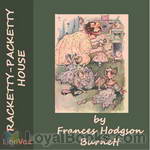 Racketty-Packetty House and other stories
Racketty-Packetty House and other stories
This is a collection of short stories and fairy tales by Frances Hodgson Burnett, the author of The Secret Garden and A Little Princess. | |
By: Jean Ingelow (1820-1897) | |
|---|---|
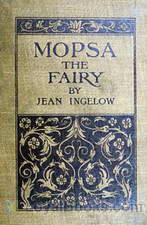 Mopsa the Fairy
Mopsa the Fairy
Jean Ingelow (1820 – 1897) was one of the more famous poets of the period, indeed many people suggested that she should succeed Alfred, Lord Tennyson as the first female Poet Laureate when he died in 1892. Mopsa the Fairy, written in 1869 is one of her more enduring stories. It is a delightful fantasy about a young boy who discovers a nest of young fairies and tells of their adventures together. | |
By: Olive Beaupre Miller [editor] (1883-1968) | |
|---|---|
 In the Nursery of My Bookhouse
In the Nursery of My Bookhouse
Full of delightful nursery rhymes, charming poems and engaging stories, folk and fairy tales, this is the first volume of the "My Bookhouse" series for little ones. Originally published in the 1920's as a six volume set, these books, edited by Olive Beaupre Miller, contained the best in children's literature, stories, poems and nursery rhymes. They progressed in difficulty through the different volumes - this first being intended for the youngest audience. | |
By: Walter De la Mare (1873-1956) | |
|---|---|
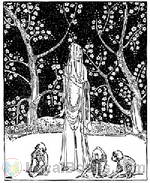 The Three Mulla-mulgars
The Three Mulla-mulgars
Three monkey brothers, Thumb, Thimble, and Nod, are Mulla-mulgars or royal monkeys. As she dies, their mother gives them the enchanted Wonderstone for protection, and tells them to follow their father. They embark on a journey of fantastical adventure to find their father, who left years earlier in search of the kingdom of his brother, the Prince of the Valleys of Tishnar, promising to return for them after he had found the way. | |
By: Unknown | |
|---|---|
 National Nursery Book
National Nursery Book
"The Publishers offer in this little volume of well known and long loved stories to their young readers. The tales which have delighted the children of many generations will, they feel assured, be equally welcome in the nurseries of the present day, which, with the popularity and antiquity of the contents of the volume, justify them in styling it The National Nursery Book." Red Riding Hood, The Three Bears, Mother Hubbard, Cinderella and many other well known stories, poems, nursery rhymes and songs are included in this little book. Note that the Punch and Judy story does include a lot of gratuitous violence but then that is what Punch and Judy seem to be all about, eh? | |
By: Hamilton Wright Mabie (1846-1916) | |
|---|---|
 Famous Stories Every Child Should Know
Famous Stories Every Child Should Know
The group of stories brought together in this volume differ from legends because they have, with one exception,no core fact at the centre, from myths because they make no attempt to personify or explain the forces or processes of nature, from fairy stories because they do not often bring to the stage actors from a different nature from ours.... The stories which make up this volume are closer to experience and come, from the most part, nearer to the every-day happenings of life. | |
By: Plato (Πλάτων) (c. 428 BC - c. 347 BC) | |
|---|---|
 Critias
Critias
This is an incomplete dialogue from the late period of Plato's life. Plato most likely created it after Republic and it contains the famous story of Atlantis, that Plato tells with such skill that many have believed the story to be true. Critias, a friend of Socrates, and uncle of Plato was infamous as one of the bloody thirty tyrants. | |
By: Friedrich Schiller (1759-1805) | |
|---|---|
 Criminal from Lost Honour
Criminal from Lost Honour
"In the whole history of man there is no chapter more instructive for the heart and mind than the annals of his errors. On the occasion of every great crime a proportionally great force was in motion. If by the pale light of ordinary emotions the play of the desiring faculty is concealed, in the situation of strong passion it becomes the more striking, the more colossal, the more audible, and the acute investigator of humanity, who knows how much may be properly set down to the account of the mechanism... | |
By: Anonymous | |
|---|---|
 Jokes For All Occasions
Jokes For All Occasions
JOKES FOR ALL OCCASIONSPREFACEThe ways of telling a story are as many as the tellers themselves. It is impossible to lay down precise rules by which any one may perfect himself in the art, but it is possible to offer suggestions by which to guide practise in narration toward a gratifying success. Broadly distinguished, there are two methods of telling a story. One uses the extreme of brevity, and makes its chief reliance on the point. The other devotes itself in great part to preliminary elaboration in the narrative, making this as amusing as possible, so that the point itself serves to cap a climax... | |
By: Clement | |
|---|---|
 Women in the fine arts
Women in the fine arts
WOMEN IN THE FINE ARTS FROM THE SEVENTH CENTURY B. C.TO THE TWENTIETH CENTURY A. D.BY CLARA ERSKINE CLEMENT PREFATORY NOTE As a means of collecting material for this book I have sent to many artists in Great Britain and in various countries of Europe, as well as in the United States, a circular, asking where their studies were made, what honors they have received, the titles of their principal works, etc. I take this opportunity to thank those who have cordially replied to my questions, many of whom... | |
By: Sir James Knowles | |
|---|---|
 The Legends of King Arthur and His Knights
The Legends of King Arthur and His Knights
MANUAL OF SURGERY, OXFORD MEDICAL PUBLICATIONSBY ALEXIS THOMSON, F.R.C.S.Ed.PREFACE TO SIXTH EDITION Much has happened since this Manual was last revised, and many surgical lessons have been learned in the hard school of war. Some may yet have to be unlearned, and others have but little bearing on the problems presented to the civilian surgeon. Save in its broadest principles, the surgery of warfare is a thing apart from the general surgery of civil life, and the exhaustive literature now available on every aspect of it makes it unnecessary that it should receive detailed consideration in a manual for students... | |
By: Sergey Nikolov | |
|---|---|
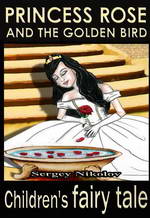 Princess Rose and the Golden Bird
Princess Rose and the Golden Bird
MANUAL OF SURGERY, OXFORD MEDICAL PUBLICATIONSBY ALEXIS THOMSON, F.R.C.S.Ed.PREFACE TO SIXTH EDITION Much has happened since this Manual was last revised, and many surgical lessons have been learned in the hard school of war. Some may yet have to be unlearned, and others have but little bearing on the problems presented to the civilian surgeon. Save in its broadest principles, the surgery of warfare is a thing apart from the general surgery of civil life, and the exhaustive literature now available on every aspect of it makes it unnecessary that it should receive detailed consideration in a manual for students... | |
By: Hans Christian Andersen (1805-1875) | |
|---|---|
 Snow Queen and Other Stories
Snow Queen and Other Stories
This project features four longer stories by Hans Christian Andersen.Andersen's fairy tales, which have been translated into more than 125 languages, have become culturally embedded in the West's collective consciousness, readily accessible to children, but presenting lessons of virtue and resilience in the face of adversity for mature readers as well. They have inspired motion pictures, plays, ballets, and animated films. ( | |
By: Lewis Carroll (1832-1898) | |
|---|---|
 Sylvie and Bruno Concluded
Sylvie and Bruno Concluded
Sylvie and Bruno Concluded continues the adventures of the many characters in the previous volume Sylvie and Bruno. The fairy-children Sylvie and Bruno are charming whenever they appear, their fairy companions such as the Professor delight in taking ideas to their logical (and humorous) conclusions, and many nonsense songs are sung. Meanwhile, the mortals (comprised of the unnamed narrator, the gracious Lady Muriel and the sententious Arthur) tend to become the vehicles for Carroll's regular sermons on morality and proper Christian values. | |
By: Howard Pyle (1853-1911) | |
|---|---|
 Wonder Clock
Wonder Clock
"Four and twenty marvellous tales, one for each hour of the day," retold in a novel and entertaining manner by a master of the form. While drawing on German, English, and Scandinavian folk literature for many of his characters and plots, Pyle reworks the material in an imaginative way, crafting the tales in his own inimitable style. Equally engaging are the numerous woodcuts that accompany the stories and enliven the narrative. Read along and see the illustrations | |
By: Charles Godfrey Leland (1824-1903) | |
|---|---|
 Algonquin Legends of New England or Myths and Folk Lore of the Micmac, Passamaquoddy, and Penobscot Tribes
Algonquin Legends of New England or Myths and Folk Lore of the Micmac, Passamaquoddy, and Penobscot Tribes
This work, then, contains a collection of the myths, legends, and folk-lore of the principal Wabanaki, or Northeastern Algonquin, Indians; that is to say, of the Passamaquoddies and Penobscots of Maine, and of the Micmacs of New Brunswick. All of this material was gathered directly from Indian narrators, the greater part by myself, the rest by a few friends; in fact, I can give the name of the aboriginal authority for every tale except one. | |
By: Johann Wolfgang von Goethe (1749-1832) | |
|---|---|
 Faust II
Faust II
Faust is the protagonist of a classic German legend; a highly successful scholar, but also dissatisfied with his life, and so makes a deal with the devil, exchanging his soul for unlimited knowledge and worldly pleasures. Johann Wolfgang von Goethe's Faust is a tragic play in two parts. It is Goethe's most famous work and considered by many to be one of the greatest works of German literature. Rich in classical allusion, in Part Two the romantic story of the first Faust is forgotten, and Faust wakes in a field of fairies to initiate a new cycle of adventures and purpose... | |